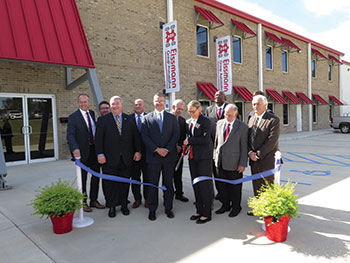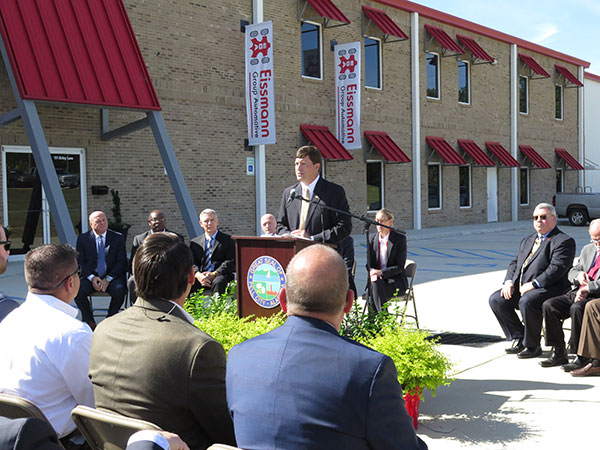
Economic Development Council marks
20 years of collaboration and success
Story by Paul South
Photos by Graham Hadley
and Jamie Collier
In a sense, economic development is like growing a garden. Everything comes in season – tilling, planting, watering and fertilizing, waiting for the effort to blossom. For the past 20 years in St. Clair County, government, industry, small business and the citizenry, have come together like seed, soil, sun and rain to grow one of Alabama’s fastest-growing counties.
With a basketful of projects in progress or in prospect, plus a recent capital campaign meeting its fundraising goals, the St. Clair County Economic Development Council appears poised for another bountiful harvest.
The EDC has just completed raising its $500,000 goal in its annual capital campaign, Partnership for Tomorrow. The fundraising effort not only fuels the EDC’s regional, national and international recruitment reach that extends from Europe to the Pacific Rim, but also foots the bill for things as mundane as paying salaries for the EDC’s small staff and keeping the lights burning.
“We’ve always been very fortunate to have community support in these endeavors. We have a 20-year track record of being both good stewards of the funds given to us and being very productive in utilizing those funds,” said EDC Executive Director Don Smith.
The EDC is also about to embark on a new five-year plan, crafted after feedback from business, government and St. Clair County citizens. Education and workforce development, job recruitment and retention, marketing and leadership development remain as goals from previous plans.
The new plan includes a focus on developing tourism, an effort to trumpet the county’s rich history, attractions and natural resources. A slice of the capital campaign includes raising an extra $100,000 to hire an individual to promote and market tourism.
The practice of crafting and executing five-year plans began under former EDC Executive Director Ed Gardner Jr., who succeeded his father, Ed Gardner Sr., in the role. Gardner Sr. was the EDC’s first executive director. He laid the foundation for the EDC’s history of success.

And the five-year plans begun under Gardner Jr. have helped build the EDC into the success it is today. This will be the second five-year plan on Smith’s watch. It’s hoped the tourism push will, like a stone skipping across one of the county’s cherished waterways, have a ripple effect in all sectors of the county’s economy. The Coosa River, Neely Henry and Logan Martin lakes, Little and Big Canoe creeks, Chandler Mountain and Horse Pens 40 are the surface of the county’s tourism treasures. Through the efforts of the EDC’s push, the county has embraced the Forever Wild initiative, aimed at preserving the environment for future generations.
An important note, tourism-driven initiatives spark high return on investment
“Tourism really does feed into the other areas on which we have previously been focused, Smith said. “This will help bring new residents into the area, which will increase our workforce pool. It will also bring in new sales tax and tourism dollars, which will be beneficial to the funding of the municipalities, schools and also bring more sales to our small business owners in the county.”
In this, Alabama’s bicentennial year, the county’s history is also something to be celebrated through festivals around the county.
“I believe that what we want to do is really market our strengths. We are blessed in this county with beautiful lakes and streams, mountains and valleys, a variety of wildlife and foliage. We want to make sure we have opportunities for people who are here to spend time outside and enjoy what we have here. We want to pull people from the urban areas, to be able to enjoy outdoors activities as well.”
Tourism can also spark the county as attractive for retirees or for families seeking a second home.
“Our philosophy is the more people that come and visit St. Clair County will only create more believers that this is one of the best counties in the state,” Smith says.
Along with the tourism push, the county will continue its efforts in manufacturing and retail recruitment, workforce development, education and building future generations of leaders through Leadership St. Clair.
The EDC works closely with Jefferson State Community College and the St. Clair County, Leeds and Pell City Schools to train workers and connect them with recruiters.
“I believe with things like creating a new apprenticeship program, developing a site-ready pad in the Cogswell Industrial Park in Pell City, and really engaging the public school systems in the importance of career readiness, allowed us to have success on a grander scale than we had initially thought possible,” Smith says.
Jason Goodgame, vice president of the Goodgame Company, has been involved in the construction and expansion of a number of local industries, including Eissmann. The long relationship has expanded business and created jobs. He has pitched the county’s assets to firms around the globe.
“We have a great source of employment. We have great people that are here. We have a great quality of life with the lakes and the school system and we work to make firms around the world a part of things here. … Relationship is what we do. … We always try to cultivate what we have in common.”
“Currently, our project and prospect level is extremely high,” Smith noted. “We have some 20 projects or prospects we’re managing right now. We’re trying to get a lot of the prospects into an announced project status and a lot of the projects into a ‘completed’ status.” The expansion in Steele at Unipres, Charity Steel’s new location in Riverside, TCI of Alabama, Impact Metals, and Allied Minerals’ new investment in Pell City as well as unannounced retail projects throughout the county are a testament to the economic vitality of all of our communities.”
On top of the new investments, Charity Steel pours a portion of its profits back into the community, Trinity Highway Safety Products was honored with one of Gov. Kay Ivey’s Trade Excellence Awards, and WKW was just named Supplier of the Year for the second straight year by the Alabama Automotive Manufacturers Association.
The recent large expansion at Eissmann is another reason for optimism. All of this success highlights a high level of collaboration between the county, its municipalities and the business community with the EDC.
“The leadership component is so important. One of the things that we stress is the ability to do great things when we’re all working together, Smith says. One city, partnering with another city to share sewer and water, or police and fire protection is really not possible unless you have good cooperation.”
Joe Kelly, chairman of the EDC board of directors for the past three years, and a member of the board since its inception, credits local governments for allowing the EDC to do its job, sparking strong growth.
“One of the great things about our county and our county leadership is that they not only have allowed the EDC to do its work, they have been a tremendous source of encouragement as our staff goes out and slays the dragon, so to speak.
The future of that working relationship is bright, as St. Clair works with its northern neighbors to grow the Interstate 59 Corridor.
“We’re going to continue to focus on wealth creation, which is the continued recruitment of employers and making sure we have good quality companies coming into our community. We’re going to have population growth that’s going to take place,” Smith said.
“We’re going to continue to educate elected officials on the importance of community planning so we can eliminate the hodgepodge of development that takes place a lot of times, where you have incompatible neighbors. We’re going to continue to plan to address congestion and traffic issues. Those are things we’re going to try to have as part of our plan going forward.”
“Each time, we have exceeded the goals that were put forth for us,” Smith said. “This just adds on to the previous 10 years that the EDC has been in operation. The EDC has been active for 20 years and has an incredible track record of being fiscally responsible, very effective in achieving our goals and growing our county.”
No one could have foreseen the success of the EDC when it began its work 20 years ago, Kelly said. The initial focus was on industrial recruitment and job creation but blossomed into much more.
“That was done, but it has transformed into many other aspects of improving the quality of life in St. Clair County,” Kelly said.
The secret to the EDC’s success in its 20 years? “One of the things that we’ve done best is not talking a lot but listening a lot,” he explained. “We actually solicit that kind of advice from our business community.”
As the EDC wraps up this capital campaign and embarks on the new five-year plan, Kelly reflected on the EDC and its history, seasoned with a basketball analogy. And he praised the staff and the board over the two decades of toil.
“I don’t think when we started, we had the vision that in 20 years we were going to be going and growing, but I do know . . . when we brought in Ed Gardner Sr., it was like when Auburn hired Bruce Pearl. We set a standard when we brought (Gardner Sr.) in, and so we couldn’t back away. And we haven’t,” he said.
“Everybody on the board – past and present – have focused on what’s best for St. Clair County. We’re often asked, ‘How do you do it?’, and it’s the quality of the people.”














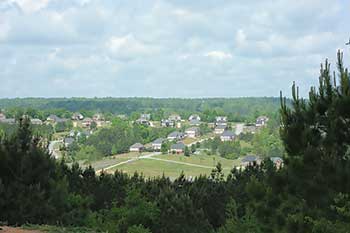
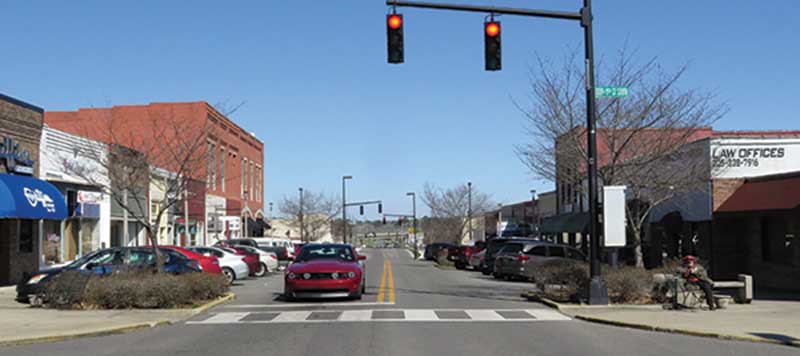
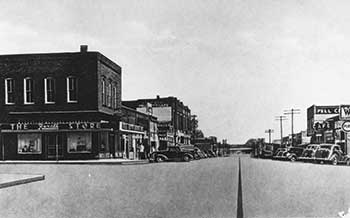
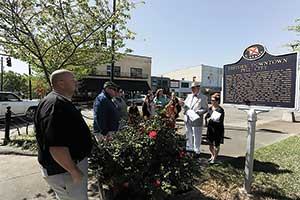
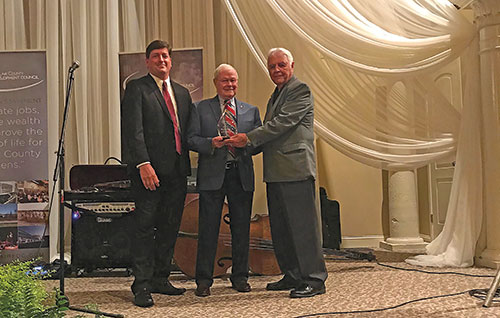
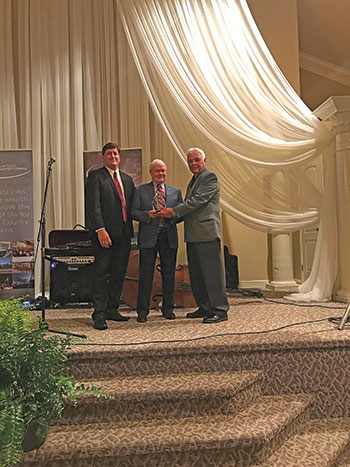 Handed over the blueprints for success
Handed over the blueprints for success The award is given annually to a person who has gone above and beyond in their support of economic development in St. Clair County. “These are private citizens – not public officials – who are out there trying to make this county better,” said current St. Clair County Economic Development Council Executive Director Don Smith.
The award is given annually to a person who has gone above and beyond in their support of economic development in St. Clair County. “These are private citizens – not public officials – who are out there trying to make this county better,” said current St. Clair County Economic Development Council Executive Director Don Smith.
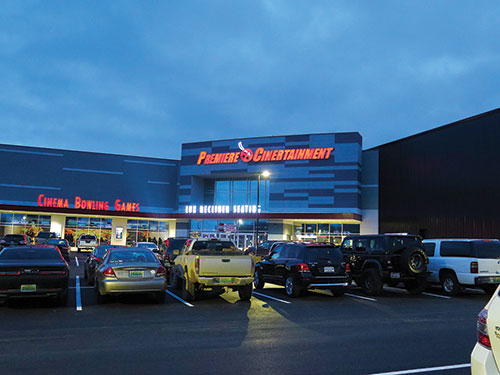
 Story by Linda Long
Story by Linda Long “We offer something for just about everybody,” he said.
“We offer something for just about everybody,” he said.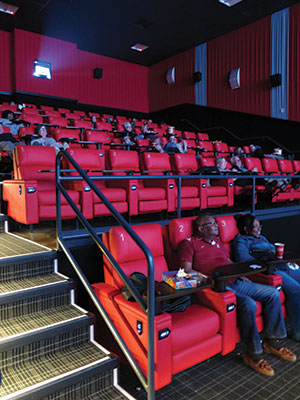 Moore agreed, saying Smith and City Manager Brian Muenger’s support for the project ensured its success. “Without their support and enthusiasm, this project would never have happened.” He added thanks to Funderburg as well.
Moore agreed, saying Smith and City Manager Brian Muenger’s support for the project ensured its success. “Without their support and enthusiasm, this project would never have happened.” He added thanks to Funderburg as well.